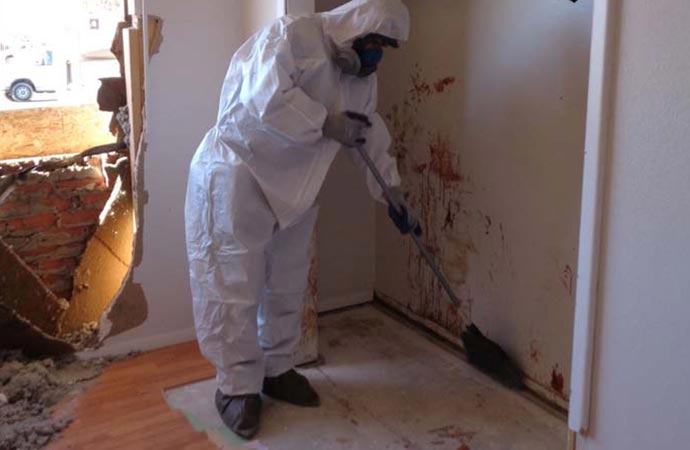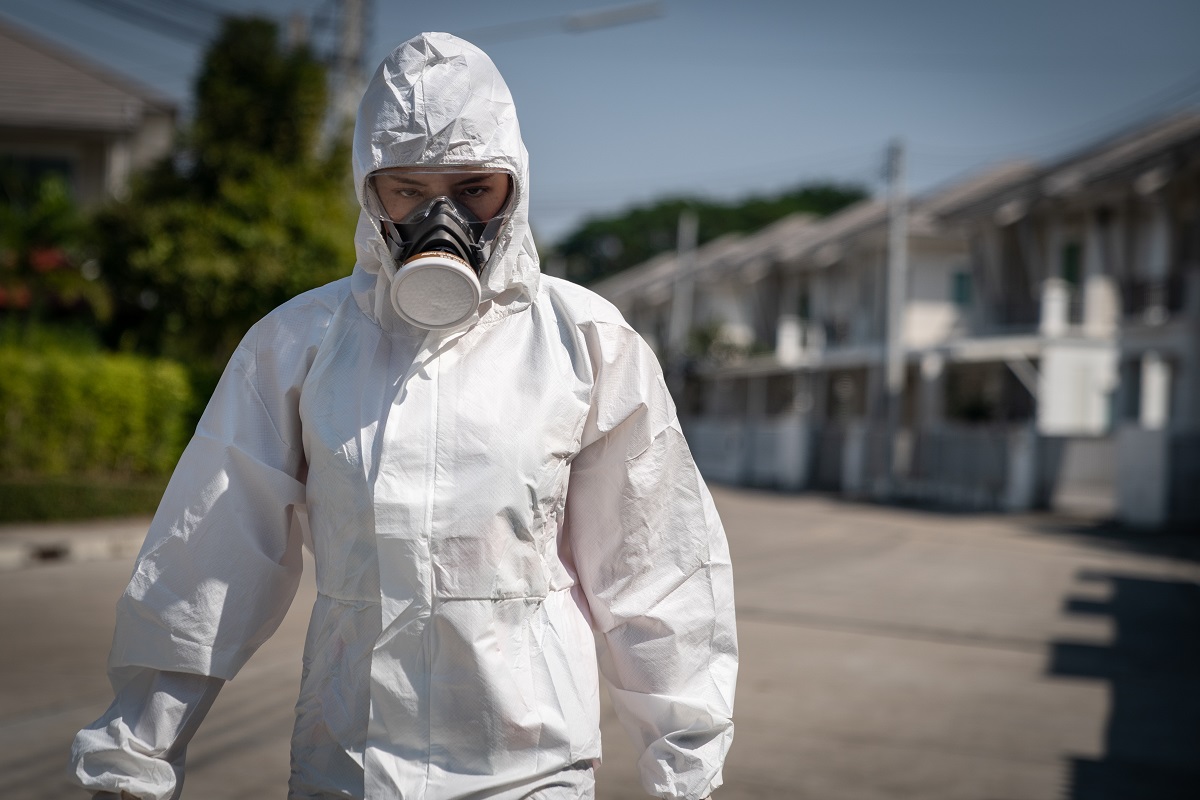Expert Biohazard Cleaning and Purification for Blood, Bodily Fluids, and Hazardous Products
The prospective wellness risks connected with direct exposure to biohazards underscore the important demand for meticulous handling and complete cleanup. As we navigate the complex landscape of biohazard cleaning, understanding the nuances of guidelines, conformity, and the specialized devices at play comes to be vital in guaranteeing a safe and complete decontamination process.
Health And Wellness Dangers of Biohazard Exposure
Direct exposure to biohazards postures substantial health and wellness dangers that can cause extreme effects for areas and people alike. Biohazards encompass a large range of biological materials, including blood, bodily fluids, mold, bacteria, infections, and various other possibly infectious products. When people come right into call with these biohazards, whether via crashes, incorrect handling, or ecological exposure, they deal with the danger of having severe health problems or conditions.
Among the main health risks related to biohazard direct exposure is the transmission of transmittable conditions. Bloodborne virus such as HIV, liver disease B and C, and different bacteria can be present in biohazardous products, presenting a direct threat to human health. Breathing in air-borne biohazards like mold spores or entering call with polluted surfaces can also bring about breathing issues, allergies, and various other unfavorable wellness impacts.
Additionally, biohazard direct exposure can have long-lasting health effects, with some illness manifesting years after the first get in touch with (Blood Cleanup). As a result, it is vital to prioritize correct biohazard cleaning and purification to alleviate these health dangers and ensure the safety and security of individuals and areas

Specialized Training for Biohazard Cleaning
When it comes to dealing with biohazard cleaning efficiently and safely, specialized training plays an essential duty in ensuring proper decontamination treatments are adhered to. Biohazard cleaning requires particular expertise and abilities to properly mitigate risks related to bloodborne microorganisms, physical liquids, and unsafe products. Professionals trained in biohazard cleanup undertake strenuous guideline on how to safely handle, remove, and throw away biohazardous products to stop contamination and direct exposure.
Specialized training for biohazard cleaning covers a variety of crucial topics, including correct personal protective tools (PPE) usage, bloodborne microorganism understanding, decontamination methods, and harmful waste disposal methods. People learnt biohazard cleaning are equipped with the necessary know-how to examine contamination levels, identify possible threats, and carry out proper clean-up procedures in conformity with governing requirements.
Continuous training and education and learning are extremely important in the area of biohazard cleaning to remain updated on the latest purification innovations, safety protocols, and laws. By purchasing specialized training, biohazard cleanup specialists can successfully respond to emergency situation cleanup scenarios and secure both public health and the setting.
Value of Proper Purification Techniques
Making use of appropriate decontamination methods is essential in biohazard cleaning to properly lessen and get rid see this here of unsafe materials health and wellness dangers. Efficient decontamination not only guarantees the elimination of visible traces of blood, physical fluids, and various other biohazards but additionally targets unnoticeable virus that may present serious health and wellness hazards if not properly gotten rid of. By following rigid purification protocols, trained specialists can considerably minimize the threat of exposure to hazardous microbes, infections, and microorganisms that can result in infections or conditions.
Proper decontamination methods entail using customized equipment and anti-bacterials that are specifically developed to reduce the effects of biohazards properly. Thorough cleansing and disinfection of contaminated areas are vital to protect against the spread of pathogens and ensure a safe environment for residents. Furthermore, the right disposal of biohazardous waste adhering to purification treatments is crucial in protecting against contamination of various other surface areas or people.

Devices and Tools for Safe Cleaning
When dealing with blood, physical fluids, or harmful products, biohazard cleaning experts depend on specialized gear to lessen direct exposure risks and extensively sanitize the damaged area. Furthermore, biohazard cleansing sets consisting of anti-bacterials, absorbent products, and biohazard bags are utilized to securely dispose and have of contaminated items.
Advanced cleaning tools like hospital-grade anti-bacterials, HEPA-filtered vacuum cleaners, and misting machines are utilized to sterilize surface areas and get rid of biohazards effectively. Specialized equipment such as sharps discover here containers and biohazard waste disposal bins are used to securely take care of sharp objects and biohazardous waste materials. By utilizing the appropriate devices and devices, biohazard cleansing experts can make sure a detailed clean-up procedure that prioritizes safety and security and minimizes health dangers for both employees and owners of the damaged room.
Rules and Conformity in Biohazard Cleansing
Appropriate adherence to guidelines and conformity standards is critical in biohazard cleaning to guarantee the safety of both personnel and the environment. Federal government firms such as OSHA (Occupational check out this site Safety And Security and Health And Wellness Administration) and the EPA (Epa) have developed details standards for biohazard clean-up procedures to minimize wellness threats and ecological contamination. These policies cover a series of facets consisting of the handling, transportation, and disposal of biohazardous materials, along with the needed training and protective devices needed for personnel associated with the cleaning process.
Biohazard cleaning firms need to stay current with these guidelines to guarantee that their procedures satisfy the required safety and security requirements. Failing to comply with these laws can lead to severe effects, including penalties, legal activity, and threatening the health of people and the environment. By following stringent guidelines and conformity measures, biohazard cleansing companies can effectively reduce threats and ensure a comprehensive and secure cleaning process for all events involved.
Final Thought
In conclusion, biohazard cleansing and purification require customized training, proper methods, and adherence to regulations. Exposure to blood, physical liquids, and unsafe materials presents substantial health threats, making it vital to use the best devices and devices for safe cleanup. By complying with rigorous methods and standards, professionals can properly alleviate the threats linked with biohazard exposure and guarantee the security of both themselves and others.
As we browse the detailed landscape of biohazard cleanup, understanding the nuances of policies, compliance, and the specific equipment at play ends up being essential in making sure a secure and detailed decontamination process. (Blood Cleanup)
When it comes to dealing with biohazard cleanup efficiently and securely, specialized training plays a basic duty in making certain correct purification treatments are complied with.Using appropriate decontamination methods is critical in biohazard cleaning to successfully get rid of harmful materials and reduce wellness dangers. Additionally, biohazard cleaning packages having anti-bacterials, absorptive materials, and biohazard bags are made use of to securely include and dispose of contaminated things.
Federal government companies such as OSHA (Occupational Safety and Wellness Administration) and the EPA (Environmental Protection Agency) have developed specific guidelines for biohazard clean-up treatments to minimize health and wellness risks and environmental contamination.